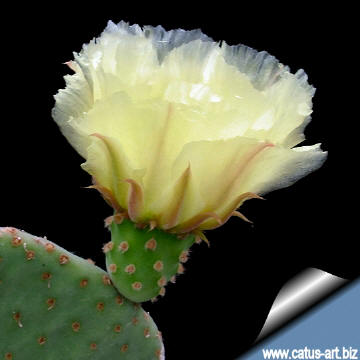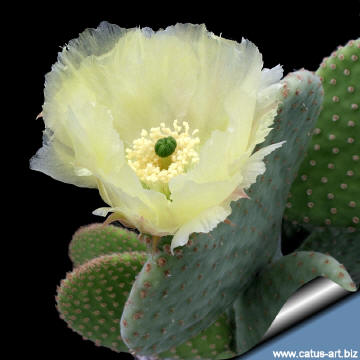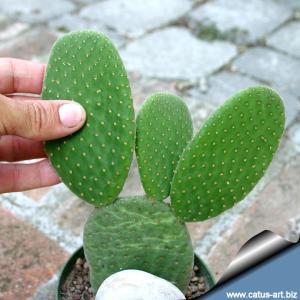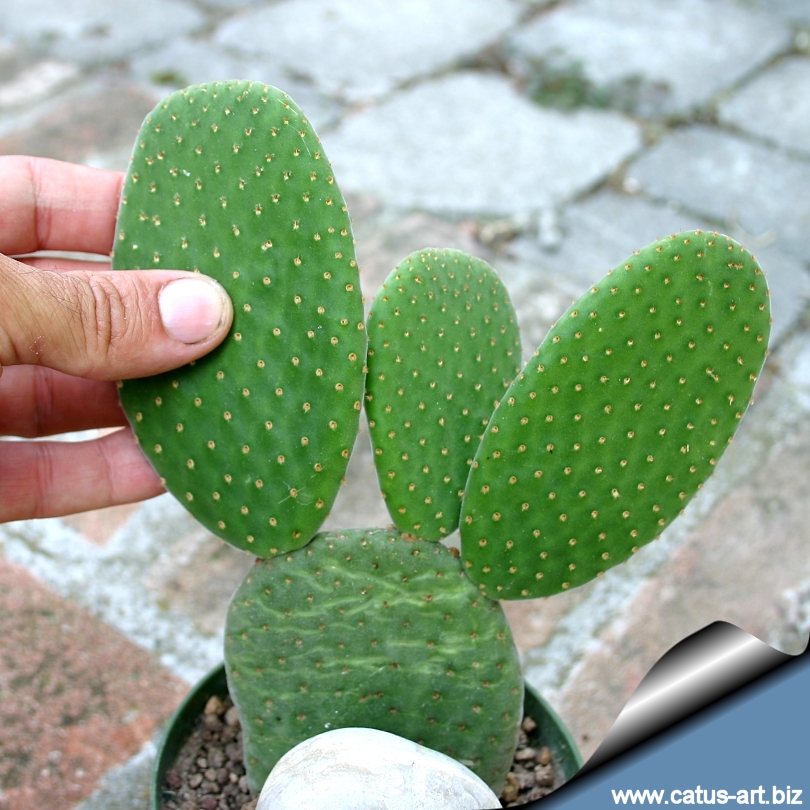-
x
Description
|
Rare glochidless no prickly form, gentle to the touch. This touch friendly plant may be cultivated without any special care, and makes beautiful pot specimens. Distinctive and rare. Family: Cactaceae (Cactus Family) Scientific Name: Opuntia microdasys(Lehmann) Pfeiffer Origin: Garden origin (Nursery produced cultivar perhaps of hybrid origin) Conservation status: Listed in CITES appendix 2. Common Names include: Bunny Ears, Polka Dot Cactus
|
|
|
Description: Freely clustering succulent with small pads. It forms a dense shrub, to 40-60 (occasionally more) cm high, up to 1.5 m across. This plant may be of hybrid origin. |
|
 |
 |
|
|
|


